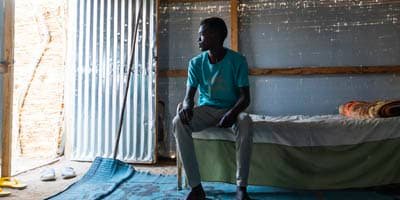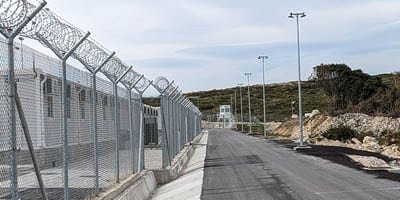Click here for the related podcast
While Canada’s immigration and refugee system is often praised for welcoming people from all around the world, the reality of immigration detention in Canada is unknown to many.
Immigration detention in Canada is an administrative measure, meaning that it does not require an offence for a person to be detained, and there is no trial. A significant number of asylum-seekers, refugee-claimants, and non-status migrants are incarcerated in Canadian immigration holding centres and provincial jails simply for immigration reasons and without a statutory time limit. They are often treated as if charged with a criminal offence, while under constant surveillance and deprived of many fundamental human rights.
During my research, I spoke to four professionals to better understand the realities of immigration detention in Canada:
- Janet Cleveland is a researcher who focuses on the rights and health of refugee claimants, refugees, and non-status migrants. Cleveland has training in law and anthropology; she also holds a doctorate in psychology with a further focus on social psychology. Cleveland is currently associated with the SHERPA University-Institute, conducting applied research on the health and wellbeing of immigrant and refugee populations. The institute also looks into the intercultural adaptation of health and social services in Canada.
- Nicholas Keung is an immigration reporter for the Toronto Star. Since 2003, Keung has written about immigration and refugee policies, border security, diversity, and human rights issues for the paper. He has been covering immigration detention issues since the 2010s, and more recently writing about resettlement and the impacts of the COVID-19 pandemic on immigrants.
- Petra Molnar is a lawyer and anthropologist specializing in migration, technology, and human rights. Her research focuses on the ways that migration is being controlled and managed globally through new technological methods of decision-making. Along with academic publications, she also writes for the press on the politics of refugee, immigration, and international law. Currently, she is the Associate Director of the Refugee Law Lab at York University in Toronto, a research and advocacy hub as a part of the Migration and Technology Monitor project. Here, she joins journalists, filmmakers, and data scientists in exploring the interactions of refugees and people on the move with surveillance technology.
- Julia Sande is a Human Rights Law and Policy Campaigner at Amnesty International Canada. A researcher and lawyer specializing in public interest law, she is a civil, political, and environmental rights advocate.
I also visited the vicinity of the Laval Immigration Holding Centre (IHC) and communicated by email with a CBSA spokesperson to gather information on the current conditions of detention at the centre. I was unable to schedule a media visit inside the centre, and was told that I could only talk to detained individuals if they file a request. I did not get an answer when I asked how they could be made aware of such a possibility.

Why does Canada detain immigrants?
CBSA may detain individuals for three main reasons:
- if they are regarded as a flight risk, which means that a person is presumed to not attend their legal immigration procedures.
- if their identity documents are falsified, missing, or incomplete.
- if they are believed to threaten public safety.
In June 2021, Human Rights Watch and Amnesty International released a report about the Canadian immigration detention system, “I Didn’t Feel Like a Human in There”: Immigration Detention in Canada and its Impact on Mental Health. This was my starting point for this article, and I spoke with Julia Sande about its content and impact.
“Between April 2016 and March 2020, and that was the period that the report looked at, flight risk was the grounds for detention in 94% of cases,” Sande said, in which a CBSA officer might claim or believe that the person might not appear for their next immigration proceeding. Only a very small percentage of individuals are detained due to identity reasons, or the fact that they are a danger to the public. Sande added that even such a label should be scrutinized.
Two main groups generally end up in immigration detention: 1) asylum seekers or refugee claimants and 2) undocumented/non-status migrants (whose refugee claims were denied, or visas expired). Janet Cleveland said that those detained are hardly ever a threat to public safety. “When we’re talking about asylum seekers, those who are detained upon arrival in Canada, it’s extremely rare that it has anything to do with the fact that they’re suspected of even being dangerous, or a public security threat, or criminality, or anything like that. It may happen, but it is very, very rare, a tiny percentage, probably less than 1% of cases.”
During the 2019-2020 fiscal year, Canadian Border Services Agency (CBSA) reported that 8,825 individuals were detained. The average length of detention was 13.9 days, and at least ten percent of all individuals spent more than forty days in detention.
Surveillance and coercive measures in immigration detention & their effects on mental health and psychological well-being
The immigration detention system is invasive, restrictive, and violent. It can have life-long-lasting impacts on a person’s mental health and psychological well-being. Coercive measures such as the use of handcuffs, shackles, orange prisoner suits, and solitary confinement are some of the traumatizing practices within the system. Continuous surveillance of immigration detainees also leaves them with the constant fear of being watched and monitored. Oftentimes, even proposed alternatives to detention involve sorts of unwanted supervision.
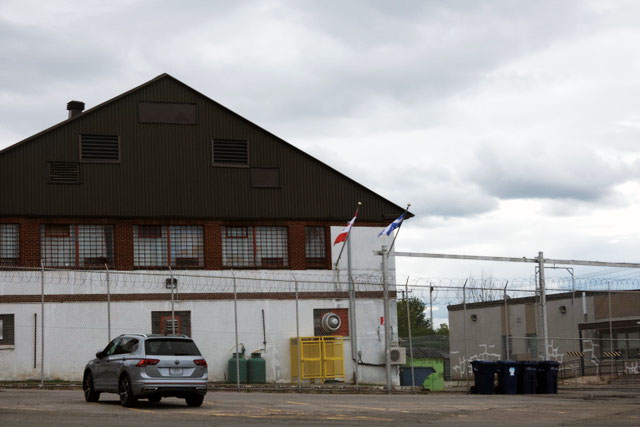
Sande spoke about the testimony, included in the 2021 report, of a previously-detained individual who had been out of detention for years. “That may have been over a decade, and they talk about how they can’t wear jewelry on their wrists because it reminds them of handcuffs, or how panicked they feel when they see a CBSA guard or someone wearing a certain colour that they had to wear while they were in jail.”
Cleveland added that being treated as a criminal while seeking refuge can be very detrimental to individuals’ mental health. “When you’re innocent, you’ve done nothing wrong, you are often traumatized. You’re seeking safety. Many people have been mistreated by the police in their own country. It is, to put it mildly, very stressful, anxiety-provoking. Also, not knowing when you’ll be released, there’s a loss of sense of agency, loss of sense of control over your own life, which is very difficult to experience,” she said. “All that combined means that there is a high percentage of people who have symptoms of depression, anxiety, post-traumatic stress during detention, and in a significant proportion of cases it may persist for weeks, months, sometimes more.”
The CBSA spokespersonwrote that, in the case of the Laval IHC, an on-site psychologist is available twice a week in three-hour blocks; a psychiatrist is also accessible once month for four hours.
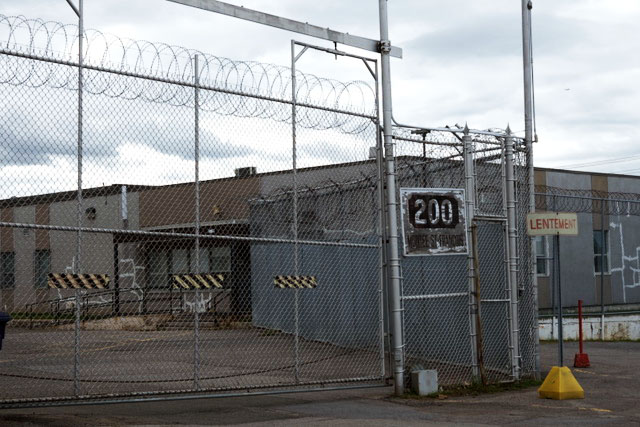
The absence of a statuary time limit on detention means that CBSA can detain individuals indefinitely, which leads to prolonged periods of incarceration and is a violation of international refugee law. The Immigration and Refugee Board of Canada (IRB) may choose to not disclose detention reviews to the public on such cases. There is also no independent party to inspect why certain individuals are detained for longer periods.
“This essentially creates this ongoing effect where a person does have a right for detention review. But often if you can imagine, you’re in detention, you might not have a lawyer, you don’t even have access to a phone or a computer,” Petra Molnar said. “Canada is one of the few countries that doesn’t have this time limit and it creates this problematic normalization of incarceration.”
As of July 25, 2022, the detainee in the Laval IHC who was there the longest time had been held for 343 days, according to the CBSA spokesperson.
CBSA can also place certain individuals in solitary confinement. This is generally implemented as a form of punishment and not only limits a person’s interaction with the outside world (restricted access to phone calls & visits) but also with other individuals in the detention centre. If this person was already suffering from a mental illness and/or had been recently traumatized by immigration detention, the practice escalates the negative impact of detention on their wellbeing.
The CBSA spokesperson wrote that CBSA may transfer individuals with a mental illness to provincial facilities on the basis that they require “dedicated access to mental health services.” The same situation also arises if there is not enough room at immigration detention centres. When detainees are placed in provincial jails, they are often treated as criminals. “They are just in a different wing”, Molnar said. “They wear orange jumpsuits. They sometimes come shackled with their wrists tied to their waist when they’re doing their refugee hearings.”
Canada has three immigration detention centres, in British Columbia, Ontario and Quebec. Individuals detained outside of these provinces are often placed in provincial correctional facilities, including maximum-security ones. Since 2000, at least 16 people have died in immigration detention, and most of them people who were incarcerated in provincial jails.
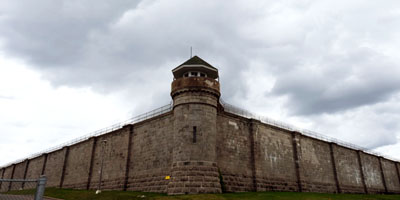
“We’re talking about a population that is coming to Canada because they’re in general fleeing persecution, fleeing from danger in their own country. An important majority of them had undergone many kinds of traumatic events, being beaten, seeing other people killed, illegal arrest by police, sexual assault and so on,” Cleveland said. “So, they’re already vulnerable and they think that they’re arriving in safety in Canada, then all of a sudden, they are arrested and placed in jail. Even if it’s explained to them that it’s for immigration reasons, it’s a tremendous shock.”
Disproportionate effects of detention
Vulnerable communities are often also disproportionately impacted by immigration detention. Experiences of racialized individuals in the Canadian immigration system show systemic and structural racism.
Nicholas Keung said that, in recent years, “The source of immigrants shifted from European backgrounds to people from Asia, the Caribbean, the Middle East, and Africa, so the experience of racialized immigrants would be predominant in the narrative when we talk about modern-day immigration in Canada.”
“Racialized people, and particularly Black people, appear to be incarcerated for longer periods of time,” Sande said. “Data from the Canadian Border Services Agency shows that in 2019 the largest portion of people held in immigration detention for 90 days or longer, for 180 days or longer, and for 270 days or longer, were all from countries in Africa.”
There are no translation services on-site, and the CBSA spokesperson stated in an email that legal aid and translation arrangements are made accessible to immigration detainees by telephone on demand.
CBSA classifies certain individuals in detention to be more vulnerable. Experiences of men and women in detention differ due to such a classification. As of July 25, 2022, there were 52 people detained in the Laval IHC, six of them women. Four accompanying minors were also ‘housed’ in the detention centre. Although women are not detained in large numbers, “it’s important to underline that men are also very vulnerable,” Cleveland said. “Many of them in our study were very depressed, anxious, had PTSD symptoms. They are particularly targeted in a systemic way by immigration detention, and that’s around the globe. Usually, more than 75% of immigration detainees are men.”
Oftentimes, immigration detention also means family separation, as men and women are placed in separate wings of detention centres, while children are kept with their mothers. Certain alternatives to detention include only detaining the father; however, Cleveland says, this is “not an acceptable solution for the child, especially, in a situation where there is already lots of stress that the child is undergoing. This will still mean the forcible separation of the child from a parent.”
Resettlement and community building
After individuals are released from immigration detention and allowed to stay in Canada (although with the continuing threat of being re-detained), they face the struggles regarding resettlement and adaptation into the community. Continuous fear, emotional distress and/or the feeling of being an outsider may follow individuals throughout their lives after detention. In certain cases, this is a part of generational trauma; children who have been also detained or housed in detention centres tend to not forget such experiences even after they are completely established in Canada.
That said, according to Keung, it is hard to keep in contact with individuals after they are no longer detained. “I personally don’t think I’ve seen many reports of academic research on what has happened after the person is released, or what has happened to that person after he or she is deported. This is sort of like when it is out of sight, it is out of mind.” Nonetheless, Keung also noted that detained individuals “tend to be better cared by the people around them after they are released, especially when it comes to medical assistance and mental health support.” In a way, surrounding themselves with people who understand their struggle becomes a coping mechanism in community building.
Cooperation between advocacy groups, and interdisciplinary approaches to understanding detention
During this research on immigration detention, I talked to people from diverse backgrounds to understand different processes of documenting detention realities and communicating with the public. Cooperation between advocacy groups, including academics, journalists and NGOs, has been increasing recently. Interdisciplinary research, working with migrant populations, and mobilizing public pressure have all become essential parts of such a cooperation.
Keung said that nowadays the media has “more continuous interest in covering immigration stories, and that’s partially reflected in the ethnic diversity of journalists in Canada.” As immigrant communities develop relationships with various stakeholders and advocacy groups, they start to tell their own stories, and so migrant issues become more than just immigration stories. Keung also mentioned that although media outlets will have their own biases on immigration policy, they are all trying to act as watch dogs and hold the government accountable.
When it comes to organizing, Keung believes that technology helps migrant communities connect and share information and their experiences in social forums. This is something to which academics and researchers should pay attention. “There’s also a reckoning among researchers of the importance of doing empirical work, meaning to do community research,” Keung said. “You need to do research in the field. And how do you do it? You talk to the people with those lived experiences for your research.”
Molnar says that her research on immigration detention has also evolved over time. Her insights on immigration detention have shifted from a traditional perspective to also understanding the impacts of recent technological developments and decision-making mechanisms that control surveillance globally. She says that the traditional look at detention involves “both representing people who are incarcerated and also trying to understand the politics of how this carceral system has been put in place legally and policy wise.”
It has also become crucial for us to pay attention to “new technology that is tested out – like unpiloted drones, AI-type lie detectors that are being introduced at airports, and also algorithmic decision making” she said. “Because we’re talking about immigration detention, we can also talk about carceral type technologies, not only technologies that might be tracking phones or voice reporting if people are leaving detention, but also something physical, such as an ankle monitor or a bracelet that a person might have to wear in lieu of being in physical detention.”
Molnar said that practices such as the imposition of voice-reporting checks or ankle bracelets are still coercive and psychologically damaging, reminding previously-detained individuals that they are still being watched and tracked.
Abolishing immigration detention
Cleveland spoke about how documenting human rights abuses and systemic discrimination is important to put pressure on the government. She said that one of the ways individuals can be part of such an effort is to sign open letters addressed to the government. She added that it’s crucial for Canadian citizens to speak up against immigration detention and the punitive manner it has been implemented, and academics with particular credibility should also be ready to testify and share expertise when it comes to government consultations.
There are significant developments that took place in recent years and months to abolish immigration detention in Canada, as advocacy groups continue their pressure. In June 2022, British Colombia announced the ending of the detention contract with CBSA on detaining migrants and asylum-seekers in its provincial jails, and shortly after Nova Scotia did the same.
Human Rights Watch and Amnesty International Canada’s #WelcomeToCanada campaign, Citizens For Public Justice’s interfaith call to action, and the Canadian Council for Refugees’ call for legislative amendment are amongst the campaigns calling for the closing of the centres.
According to Molnar, abolishing immigration detention means that its very high costs “could actually be used for education, language classes, psychosocial support, daycare support, retraining, and lawyer fees. It’s a tremendous amount of money that the state is choosing to spend on a carceral mentality when this money could be funnelled back into the community.”
Speaking about HRW and Amnesty’s #WelcomeToCanada campaign, Sande said, “We have this idea of Canada as a multicultural place, and it’s something that we really promote and put out there. That is in stark contrast to the experience people have within the system, and I think one of the things that was highlighted to us repeatedly, when this research was ongoing, was that people coming here had that same impression that they would indeed be welcomed in Canada.
“There’s an idea that surely people must be in detention for a reason because why would Canada do this, holding on to this hope that this system is fair,” she said. “So why would we be putting kids in immigration holding centers, or why would we be separating children from their parents when they come as refugees? Why would we be putting someone who’s seeking safety, or seeking a better life, in jail? I think it doesn’t fit with our idea of Canada, so it’s important to challenge that.”

